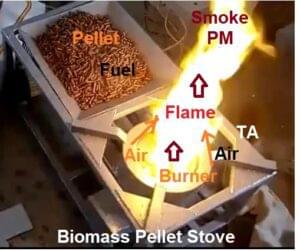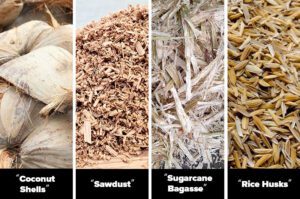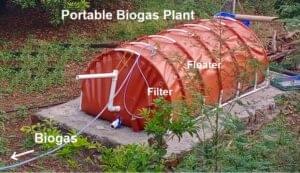Smokeless Biomass Cooking
- For hotels and cooking, the best biomass options typically depend on factors such as heat generation, efficiency, availability, and environmental impact.
-
what are Biomass Stove Engineering Design Guide and Calculations
-
Advantage’s Bamboo as Biofuel for Cooking in Home
-
Smoke and Dust Minimization Techniques for Briquette and Pellet Stoves
-
- Here are some of the best types of biomass for cooking in commercial kitchens or hotels:
Wood Pellets
- Efficiency: Wood pellets are highly efficient, compact, and have a low moisture content, which allows them to burn cleanly and produce steady, high heat.
- Advantages: They produce consistent heat, are easy to store, and are made from renewable wood waste materials (like sawdust).
- Suitability: Ideal for commercial kitchen stoves and boilers, as they offer a clean combustion process and are easily available in the market.

Briquettes
- Efficiency: Briquettes are denser than wood logs and have a higher energy content per unit, providing sustained heat over longer periods.
- Advantages: They can be made from various biomass wastes like agricultural residues (rice husks, coconut shells, etc.) and are eco-friendly since they reduce dependence on firewood.
- Suitability: Commonly used in hotels with biomass burners, especially in rural or eco-friendly setups. They are more convenient than raw biomass and have controlled combustion.

Charcoal
- Efficiency: Charcoal provides a smokeless and high-temperature cooking medium, making it one of the most traditional biomass fuels for cooking.
- Advantages: It burns hotter and cleaner than raw wood, producing minimal smoke and ash, ideal for large-scale cooking in hotels.
- Suitability: Well-suited for barbeques, grills, and open cooking methods commonly found in restaurants.
Coconut Shells
- Efficiency: Coconut shells are a high-energy biomass source, burning hotter than many other agricultural residues.
- Advantages: They are readily available in tropical regions, environmentally friendly, and provide a clean and smokeless flame.
- Suitability: Commonly used in regions with abundant coconut farming. Hotels can utilize coconut shells in specialized stoves or burners.
Rice Husk Briquettes or Pellets
- Efficiency: Rice husk is an abundant byproduct in rice-producing regions and is compressed into briquettes or pellets for better burning efficiency.
- Advantages: Affordable, locally available in many agricultural regions, and offers sustainable energy with a low environmental impact.
- Suitability: Ideal for hotel kitchens that aim to use agricultural byproducts and operate in rural or semi-urban areas.
Corn Cobs
- Efficiency: Corn cobs are another agricultural waste product with relatively high energy content.
- Advantages: They are widely available in maize-growing regions and offer a sustainable option for biomass cooking.
- Suitability: Suitable for hotels and kitchens in agricultural areas where corn is a staple crop.

Bagasse (Sugarcane Waste)
- Efficiency: Bagasse is highly efficient when dried and used as fuel. It is a byproduct of sugarcane processing, often used in boilers and stoves.
- Advantages: Renewable, cheap, and commonly available in sugarcane-producing areas. It also provides a steady heat output.
- Suitability: Hotels or restaurants in regions with sugarcane industries can make use of bagasse for cooking or heating water.

Biogas
- Efficiency: Biogas, produced from the anaerobic digestion of organic waste, provides a clean and efficient cooking fuel similar to natural gas.
- Advantages: Produces minimal pollution, is renewable, and can be generated from food waste and kitchen leftovers.
- Suitability: Ideal for hotels that wish to adopt a sustainable energy solution. Many hotels have started installing biogas plants to convert food waste into cooking fuel.
Considerations for Choosing Biomass for Hotels:
- Availability: Choose biomass that is locally abundant to minimize transportation costs.
- Combustion Efficiency: Biomass types with lower moisture content and higher calorific value are preferable for efficient cooking.
- Sustainability: Using agricultural residues and waste products is more environmentally friendly than cutting down trees for firewood.
- Smoke and Pollution: Low-smoke or smokeless options like briquettes, pellets, and biogas are ideal for commercial kitchens to maintain a clean environment.
Key Benefits of Smokeless Biomass Fuels:
- Health Impact: By significantly reducing indoor air pollution, smokeless fuels help improve the health of kitchen staff and diners in hotels.
- Environmental Impact: Smokeless biomass fuels reduce deforestation, lower carbon emissions, and make use of renewable resources.
- Cost Efficiency: Many smokeless fuels are made from agricultural waste or byproducts, making them more affordable and sustainable in the long run.
Conclusion:
- For hotels and commercial kitchens, wood pellets, briquettes, and charcoal offer efficient, clean, and high-heat energy sources.
- For hotels and cooking, wood pellets, charcoal briquettes, and biogas are among the best smokeless biomass fuel options.
- They provide clean, efficient energy that aligns with sustainability goals while maintaining high performance in commercial kitchen environment

